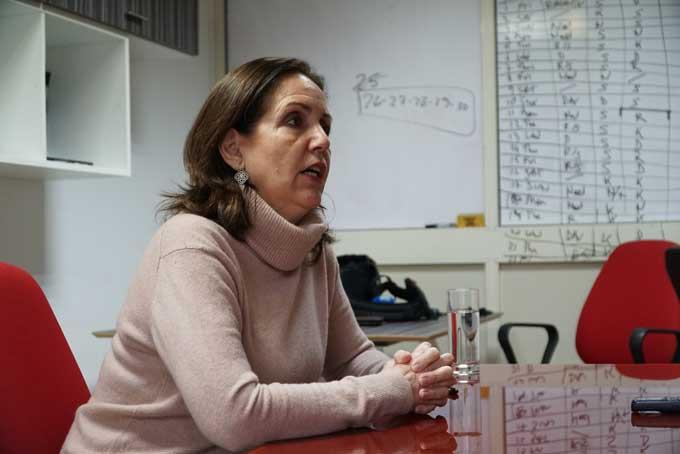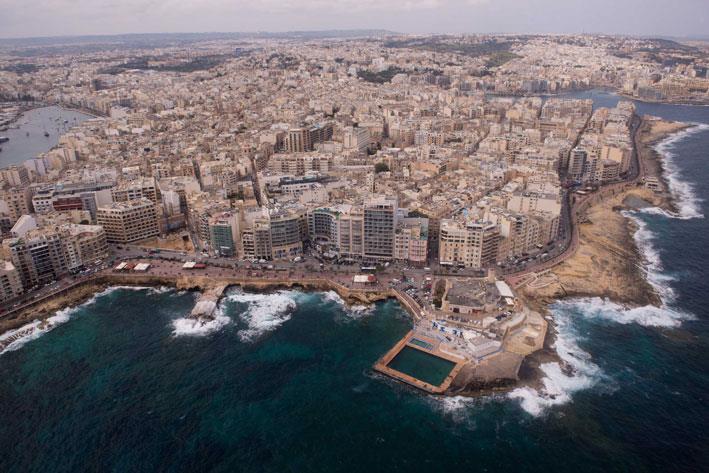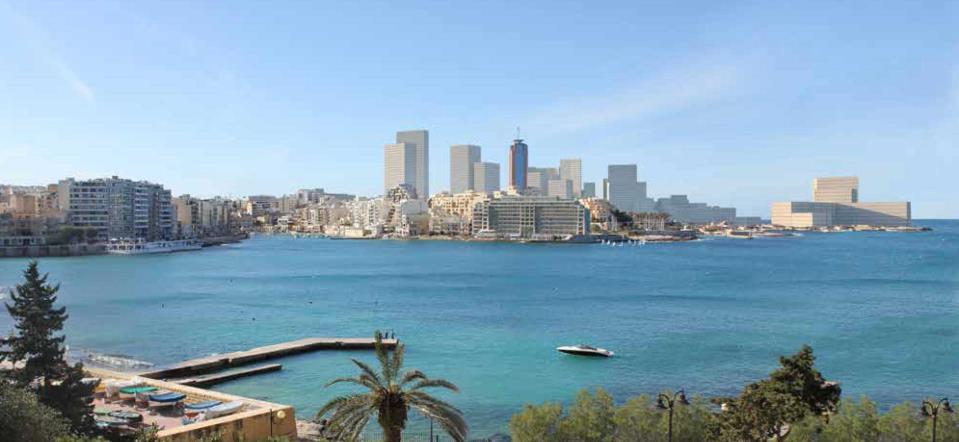Din L-art Helwa (DLH) Executive President Maria Grazia Cassar does not believe that the environment is adequately represented in the Planning Authority decision making process.
"We (DLH) try to look at all the planning applications that come out every week, attempting to vet each and every one of them. We specifically concentrate on those in Urban Conservation Areas, proposals on ODZ land, and on major developments. We file around 10 objections each week. Last year, we filed over 600 objections, and only a very small percentage were upheld, or went in our favour," she said
The DLH President said that such a small percentage is disheartening, and that things need to change. "The country cannot continue going the way it is. I believe this statement voices the opinion of many heritage NGOs, as well as young architects, tourism operators and the people in the street."
Turning to applications regarding old heritage buildings, she said that while in the past the façade of old heritage buildings would, for instance, at least be retained, nowadays there are occasions where developers are allowed to completely demolish.
She said that the heritage authorities don't have a member on the Planning Authority board, and argues that this should change. "They have the ability to file objections, and we hope they are listened to, but there are situations when the Superintendence of Cultural Heritage would say one thing, but the Authority would not follow it. The Superintendence is the highest authority on heritage in Malta."

Scheduling a building does not give a 100% protection guarantee'
Maria Grazia Cassar was asked about scheduled buildings being refurbished, but such applications including large development on the grounds.
"The whole context of a scheduled building should be protected. If a building has a large garden, it would be silly to schedule the building and not the garden, as happened in the case of the cloisters. Having said that, we found that Planning permission is often being considered in favour of the developer, and not enough consideration to the surroundings, and the effects of these applications on the neighbourhood and the building itself are given. It is always a case of giving more to the developer."
We are considering gardens just as plots of land. It's a matter of perception. We see applications more often than not being given in favour of the developer, who try to maximise the opportunities given in the application. The perception has to change. These buildings should not be considered as plots of land. When you have a heritage building, or an old building, people just look at them and think about how to develop them to the maximum. That is not heritage, that is destroying our heritage. We should look after these buildings, re-use and regenerate them, and keep the intrinsic value of the original fabric which, in 20 years when the new use would expire, would still be there and would be able to be re-used and enjoyed by future generations. We won't ensure this by just keeping facades."
"We are seeing around 100 demolitions a year of old buildings. This might not mean much to many people. There are old buildings from pre-war, some medieval and not considered to be of value, but they are the important fabric, that gives Malta its characteristics, our architectural landscape. Every house being taken down is eating away this limited resource which will one day end."

Asked whether she believes more old buildings should be scheduled, she said it is one way of protecting, but does not give a 100% guarantee. She again mentioned the Cloisters as an example, stating that the garden is going to be eaten up, and that the new apartments will overshadow the scheduled building. "We are not against development, but there needs to be sensitivity and respect. We recently held the DLH awards for architectural heritage, and we gave the silver medal to a simple old house in Balzan servicing a Palazzo, which were cleverly turned into a home which includes a new addition above it, and one could see the new and modern addition. It was, however, done sensitively and in harmony with the existing building. We want better quality, and we cannot keep demolishing because of no new ideas. The clever thing is to use what we have, enhance it and keep it for the future."
She said that scheduling can be stepped up, and was pleased with the PA for scheduling a number of houses in Sliema. "However, there has been a backlog of proposals for scheduling, and this needs to be brought up to date."
She highlighted however, that just a few weeks before the Sliema houses were scheduled, DLH had proposed that St Ignatius villa in St Julian's which dates back to the early 1800s. "It probably boasts the first example of ne-gothic architectural style in Malta, which was a country villa for a gentlemen, was a Jesuit college, a hospital during WW1, housed the Russian revolution refugees which gave Exiles the location name, etc. The church and the later additions of the Jesuit College abutting this villa are scheduled, but our proposal, for this building to be scheduled, providing the Planning authority with a number of reasons after we commissioned a historical appraisal, we received a refusal without any reason. We cannot understand the rationale. If you are given all this on a plate to help you in your scheduling process... we just cannot understand."
Need for a 3D visual study on impacts of tall buildings
She was asked for her opinion on tall buildings and their effects on the skyline. She said that DLH is very concerned. "In fact when the first two approvals, one in Mriehel and the Townsquare project came about in 2016, DLH straight away said we will appeal. The visual impact of these tall buildings is one of the major concerns. In Mriehel, which is in centre of Malta it is of great concern as it will be seen from everywhere, and we feel that besides this, Mriehel should not be one of the areas where high rise buildings be allowed since it was not subjected to public consultation when the proposals for the various areas were carried out in the Floor Area Ratio policy.

She was also asked whether she believes there is a spot in Malta where tall buildings should be allowed. She said that DLH believes that there must be a 3D visual study of the effects of tall buildings in Malta. "Only when we have a master plan which will be the result of proper visual studies, in order to truly see what Malta will look like with the areas proposed and seeing actual tall development, can we see what the effects of the whole area being developed would be. We cannot look at one project at a time, but must look at all projects together with hypothetical and in-the-pipeline projects being built." Only then can the whole situation be evaluated, she said, mentioning that Malta does not currently have the infrastructure. "What is the transport plan for these tall buildings that will increase the population in that spot, what is the effect n the sewage system, on electricity supply. This data has to be there, it cannot be a situation of build now and deal with the situation later."
"An attempt at a Paceville master plan was made by government, but had started off on the wrong footing. The first step when making a master plan is to discuss with the stakeholders, the people being affected in the location. That step was not taken, and was only done after the plan was drawn up. As a result they were reacting to a master plan. A master plan means bringing all stakeholders on-board from the beginning to work for solutions, not create a proposal and have them react to it. Thankfully the PA withdrew it, and I do not know what happened with that idea. In the meantime however, there are very big developments being decided on." She stressed the need for a proper master plan, with consultation first, and urged government to get moving on this issue.
She believes that a location for tall buildings in Malta could be found, t provide the necessary accommodation, office space etc, where there would be the least visual impact, possibly in an area which needs regenerations, but again stressed the need of a master plan to identify such a place.
How much more building stock do we need, how many offices, how many more dwellings?
Asked about the concept of building up rather than out, she stressed the need to corroborate this with data. "We do not know the demand, what we do know is that there is an oversupply. How much more building stock do we need, how many offices, how many more dwellings? Do we have statistics? I don't think so."

She said that she is against building horizontally taking up more land. "Let's cleverly reuse what we already have. I'm referring to empty properties, abandoned buildings, dilapidated areas etc."
She also mentioned the possibility of using old fortifications for office space after refurbishment (not referring to extra construction or any demolition). "These big spaces, including underground spaces such as at Fort Delimara which has cavernous underground spaces, can be reused to house institutions, offices, holiday accommodation etc. It's very easy to just build up, like has been proposed on other sites, than to get creative with the space we already have."
One of the main issues with utilising existing empty space is that many of such properties belong to more than one person, and thus agreement could be an issue. "There have been improvements on this, such as legislation where, if the majority of the owners want to sell, then one or two cannot hold it up. That is one step in the right direction. Rental laws were improved as well. It is not fair to have rentals made 50 years ago applying to this day when the owners can't change the rent. That makes the owners not want to conduct any repairs, which leads to dilapidation." She said that more needs to be done, and stressed the need for more coordination between the various authorities and stakeholders on such matters.
Is it fair to dramatically change the country for the sake of a few who want so much development?
She mentioned the tremendous effort by the Restoration Directorate, stating that they have conducted fantastic restoration work. She said that on the one hand, there is this side of Malta, where the Tourism Authority also shows Malta's sites of national and architectural beauty for promotions and campaigns, and on the other the in the Planning Authority, aside from one good scheme regarding home restoration, one just sees development. "It is a contradiction, what are our priorities. Let's hold the brakes. What is this rush? To destroy Malta and make it unrecognisable? People come here because it has special characteristics. What are we doing by heavily urbanising Malta? Will we still have this quality of life with high rise buildings? Is it fair to the population at large to dramatically change the country for the sake of a few who want this sort of development? "

"At the Moment, Malta has a countryside with towns and villages. We can escape to the countryside if we want to. But with tall buildings which can be seen from everywhere we won't be able t have a break from the urban environment." She said it will make Malta feel claustrophobic. "One psychological and visual mechanism that helps ease our sense of confinement is that we have unobstructed views of the sea, and don't have something to really give an understanding of Malta's physical size."
"Do we know that we are turning Malta into one big city, and that even from as far away as Siggiewi we will see high-rise buildings, making the island feel so small."
Asked about the White Rocks project, she believes that the existing buildings on site should be used due to architectural value. She said they were well built. "I know they were abandoned for many years. You can see that it was a project which took the landscape into consideration. There were buildings suited to the context and are a typical style of the time. I would rather see intelligent reuse of the buildings, with alterations where needed. We speak about recycling and limiting waste, yet will we demolish all that good stone? Quarries are running out of limestone."
Asked about possible meetings DLH held with the Environment Minister and the PN Spokesperson for the Environment, she said that DLH has not yet held a meeting with the Shadow Minister for the Environment Jason Azzopardi, and that the Environment Minister does hold meetings and does listen to the NGOs.